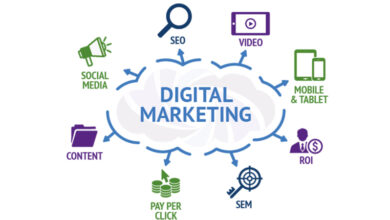
4 Technologies Powering Fintech and How They Work
Technology is evolving rapidly, and so is the financial sector. Financial technology, or “FinTech,” is a term used to describe the innovative technologies used in the financial industry. From mobile payments to peer-to-peer lending, fintech is changing how we bank and borrow money. But how do these technologies work? This article will look at some of the most popular fintech technologies and see how they’re powering the financial revolution.
Table of Contents
1. Blockchain Technology
Finance is all about trust. When you lend money to a friend, you trust that they’ll repay you. When you invest in a company, you trust that they’ll use your money wisely and make a profit. But what happens when that trust is broken? That’s where blockchain comes in.
Blockchain is a decentralized ledger system that allows for secure, transparent, and tamper-proof transactions. That means that when you make a transaction using blockchain, it is logged on a public ledger for all to see. But crucially, the data is encrypted, so only the parties involved in the transaction can see the details.
This makes blockchain an ideal technology for financial transactions that you can study by taking FinTech courses at Harvard where you can learn how this process works. It’s secure and tamper-proof, so you can be sure that your money is safe. And because it’s transparent, you can see exactly where your money is going.
2. Mobile Payments
Mobile payments are one of the most popular fintech technologies being used today. With mobile payment apps like Apple Pay and Android Pay, you can make purchases with your smartphone or smartwatch.
To use mobile payment, you simply add your credit or debit card details to the app and then hold your device up to the contactless reader at the checkout. The transaction is completed in seconds, and you’ll receive a notification confirming the purchase.
Mobile payments are convenient and secure. When you make a purchase, your card details are encrypted and stored on your device. They’re never shared with the merchant, so you can be sure that your personal data is safe.
3. Peer-to-Peer Lending
Peer-to-peer lending (P2P lending) is a type of fintech that allows individuals to borrow and lend money without going through a traditional bank.
P2P lending platforms match lenders with borrowers. The platforms typically use algorithms to assess the borrower’s creditworthiness and set an interest rate. The borrower then makes repayments to the lender, with the platform taking a small fee.
P2P lending is a convenient way to access loans and can be cheaper than taking out a loan from a bank. That’s because you’re cutting out the middleman (the bank) and dealing directly with the lender. And because the platform uses algorithms to assess creditworthiness, there’s no need for a lengthy application process.
4. Artificial Intelligence
Artificial intelligence (AI) is a type of fintech used increasingly in the financial industry. AI can perform various tasks, from fraud detection to customer service. One of the most popular applications of AI in finance is chatbots.
Chatbots are computer programs that mimic human conversation. Banks and other financial institutions are using them to provide customer support. Chatbots can answer questions about products and services and even help you manage your finances. For example, a chatbot could help you budget your money or keep track of your spending.
Conclusion
These are just some of the most popular fintech technologies being used today. With so many innovative technologies, it’s no wonder the financial industry is undergoing a revolution.








